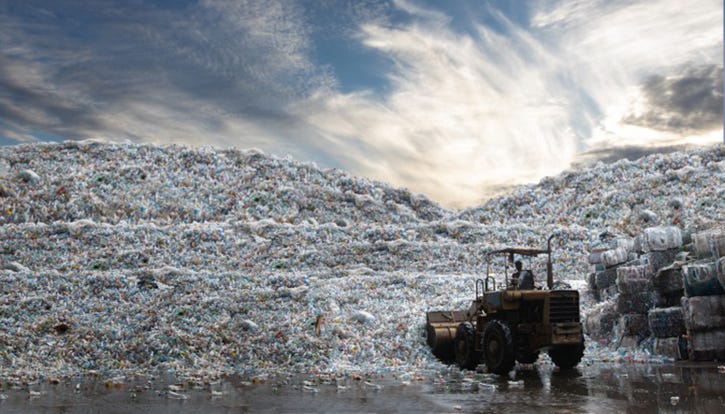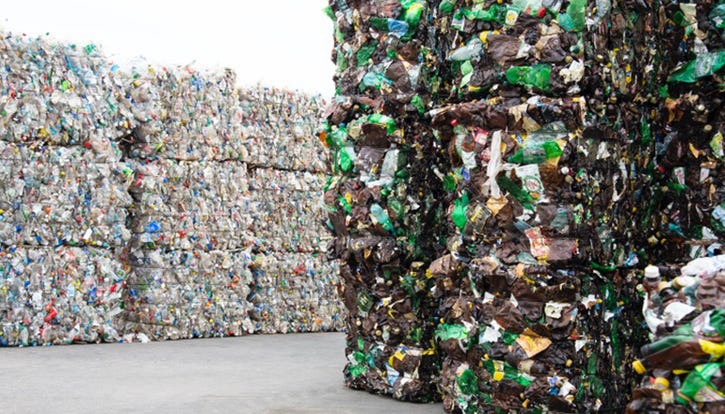Landfill Mining and Its Tremendous Potential
How can we prevent waste dumps from affecting our ecosystem? The answer is landfill mining.
April 1, 2020

Erich Lawson
An average American dumps 4.4 pounds of waste a day, and it is estimated that the U.S. produces 7.6 billion tons of industrial waste every year. Additionally, for more than 100 years, the entire world’s unwanted waste has been discarded in the land. As the trash inside landfills decomposes, it releases methane gas, which contributes to global warming and climate change. Moreover, landfills also cause negative vegetation changes because of the degraded quality of the soil.
With such visible threatening consequences of waste disposal in landfills, doing nothing is no longer an option. To reduce the impact of this waste management technique on the environment, a few practices are followed, such as:
Achieving landfill density: Heavy municipal and industrial waste is compacted using heavy trash compactors to reduce the size of the trash and achieve high waste density. This reduces the landfill area drastically.
Separating hazardous and non-hazardous wastes: This includes separating hazardous waste from the landfill content based on ignitability, reactivity, corrosiveness and toxicity. It reduces the impact on soil and vegetation.
Building sanitary or modern landfills: Water filters in through the soil, gets contaminated through the waste and then gets mixed with the groundwater. The solution to this is modern landfills that include a liner system (to prevent water from filtering in), a runoff collection system, a groundwater monitoring system, a methane collection system and a cap for closure.
These techniques are now being used actively, but what about the “non-sanitary” landfills created before these protection technologies were introduced? How can we prevent these waste dumps from affecting our ecosystem? The answer is landfill mining.

Landfill Mining and Reclamation
Landfill mining is the process of excavating waste from active or closed landfills to reduce their environmental impact. It includes removing the hazardous material from the ground after a predefined period and treating it to recover:
A combustible fraction
Recyclable materials
Soil
Landfill space
The process involves a series of operations based on the principle—excavate, sieve and sort. However, the complexity of the process increases depending on the type of landfill. The machinery used includes:
Excavators
Conveyor belts
Trommel screen
Magnet
Front end loader
Odor control sprayer
However, waste recovery or remediation measures are expensive. And to compensate for the costs of reclamation, it is essential to turn to enhanced mining. Let’s understand it in detail.
Enhanced Landfill Mining—The Future
Enhanced mining techniques can drastically reduce the costs of remediation by combining it with resource recovery. To put it in simpler terms, enhanced mining is a way to compensate for the pricey landfill mining techniques.
The process involves generating energy and recyclable goods that can provide the revenue to counterbalance the sky-high costs. Higher-value landfills are targeted, such as industrial landfills that may consist of residues from the production of valuable minerals such as aluminum, copper, zinc or steel. The enhanced mining process also is relevant for municipal waste landfills. The waste is separated into recyclable materials such as glass, metal, plastic, etc., and a refuse-derived fuel fraction.

How Landfill Mining Costs can be Recovered
Landfill mining can be expensive and may eat up to 80 percent of the project budget. However, if the use of reclaimed products is strategically planned, the cost can be recovered. Here are a few examples of how mined material can be reused:
Low-cost fuel can be used in waste-to-energy plants.
If the reclaimed soil is used at another site as daily cover, it may require the Toxicity Characteristic Leaching Procedure, which can be costly. However, there’s no need to check the toxicity levels if the requirement from the importing site is lenient. Hence, choosing lenient sites is a good cost-saving technique.
Industrial landfills are storehouses of valuable aluminum and steel scrap. Recovered metals like these can be reused in the steel industry as a significant supply source.
Landfill mining is practiced in some parts of the world. However, the huge costs of such projects are a deterrent. But this cost can be recovered if the waste management communities come up with more innovative solutions to make the best use of mined materials. The initial costs cannot be eliminated, but if the approach is correct, these landfill mines can be as beneficial as gold mines.
Erich Lawson is passionate about saving the environment through effective recycling techniques and modern innovations. He works with Compactor Management Company and writes on a variety of topics related to recycling, including tips and advice on how balers, compactors and shredders can be used to reduce industrial waste. He loves helping businesses understand how to lower their monthly garbage bills and increase revenue from recycling.
You May Also Like


.png?width=300&auto=webp&quality=80&disable=upscale)